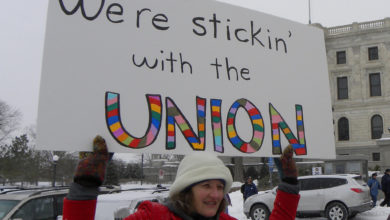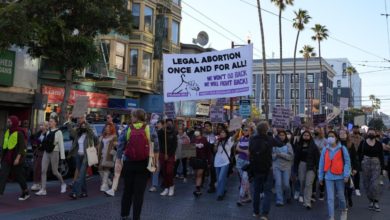In a vicious attack on women and the right to control their own reproductive processes, on April 18, the U.S. Supreme Court upheld by a 5-4 vote a federal law banning a second term abortion procedure.
Its retrograde opinion in Gonzales v. Carhart—fueled by right-wing, ruling class sentiments—harkened back to
 |
Justice Anthony Kennedy wrote the majority opinion. Kennedy was joined in the majority by the Court’s four other arch-conservative members: Clarence Thomas, Antonin Scalia, Chief Justice John Roberts and Samuel Alito.
This decision signals a significant setback for the struggle to retain reproductive rights.
Reversing reproductive rights
The law at issue, known as the “Federal Partial-Birth Abortion Ban,” criminalizes the second trimester procedure, even if a woman’s life is in danger, with felony charges and two-year prison sentences possible for doctors who perform it.
It was passed into law by Congress in 2003, with 17 Democratic senators joining 47 Republicans in voting for it to pass. A legal challenge by Planned Parenthood and other pro-choice groups brought the case eventually to the Supreme Court.
The anti-choice bigots have tried to make the issue about so-called “partial birth abortion.” In fact, “intact dilation and extraction” as it is known by doctors, is not a very commonly performed procedure, representing only .17 percent of all abortions, and only about 25 percent of second trimester abortions.
According to the New York Times, the now-banned abortion method “involves removing the fetus in an intact condition rather than dismembering it in the uterus. Both methods are used to terminate pregnancies beginning at about 12 weeks, after the fetus has grown too big to be removed by the suction method commonly used in the first trimester, when 85 percent to 90 percent of all abortions take place.”
The American College of Obstetricians and Gynecologists—representing 90 percent of the OB/GYNs in the United States—opposed the ban as harmful to women’s health and interfering with doctors’ and patients’ ability to make medical decisions.
Dr. LeRoy H. Carhart, the Nebraska doctor who challenged both the state law in 2000 and the federal law in this case said that “those who support this law are trying to outlaw all abortions, one step at a time.”
Supreme Court sexism
The language of the Supreme Court’s majority opinion sounds like the literature of the so-called right to life movement. For example: “The Act’s stated purposes are protecting innocent human life from a brutal and inhumane procedure.”
The decision attempts to bestow “personhood” on the fetus, through use of language such as:
“The Act’s ban on abortions involving partial delivery of a living fetus furthers the Government’s objectives. Congress determined that such abortions are similar to the killing of a newborn infant.”
The decision says that the Court knows better than the woman, and has the right to intervene to protect her from herself as in this outrageous and almost unbelievably sexist excerpt:
“The Act also recognizes that respect for human life finds an ultimate expression in a mother’s love for her child. Whether to have an abortion requires a difficult and painful moral decision … which some women come to regret.”
In the dissenting opinion, Justice Ruth Bader Ginsburg—the court’s lone woman member in the wake of Sandra Day O’Connor’s 2006 departure—strongly stated that “this way of thinking reflects ancient notions of women’s place in the family and under the Constitution—ideas that have long since been discredited.”
A fundamental question that must be asked is why five rich, reactionary and appointed-for-life men have the right to set policy that vitally affects more than half the population? What kind of “democracy” is the United States really?
The Bush administration welcomed the reactionary decision. Bush said, “The Supreme Court’s decision is an
 |
Reviving the struggle
The Carhart decision is not just about one particular abortion procedure. It will be interpreted in many states to apply to all second trimester abortions, effectively banning all abortions after the 12th week of pregnancy. Working-class women, especially those from oppressed communities, will suffer the most from the decision and any subsequent laws inspired by it.
Women didn’t win the right to choose in the 1973 Roe v. Wade decision because a group of unelected men in black robes suddenly saw the light and realized that a woman should be able to make decisions about her own body.
Roe v. Wade
happened in the context of an upheaval of struggle, not only for women’s rights but for rights for all oppressed people, including militant struggles against racism and the Vietnam War.Confining the struggle against this outrageous decision to electoral and legal avenues is a dead end for the pro-choice movement. Women cannot pin our hopes on the next president to appoint a “liberal” judge to the Supreme Court.
All supporters of reproductive rights need to be out in the streets and at campuses declaring that women won’t go back to the days of the back alley abortion; that women won’t accept sexist chauvinism; and that women will fight back. Building a militant movement against this and all future attacks on women’s rights and lives is a key task for revolutionaries today.






